Everything You Need to Know About Rabbits: A Complete Guide
 Welcome to the comprehensive guide to rabbits, where we delve deeply into every aspect of keeping these charming and intelligent pets. Whether you're a novice rabbit owner or a seasoned rabbit enthusiast, you'll find everything you need to keep your furry friends happy and healthy. Let's delve into the wonderful world of rabbits together!
Welcome to the comprehensive guide to rabbits, where we delve deeply into every aspect of keeping these charming and intelligent pets. Whether you're a novice rabbit owner or a seasoned rabbit enthusiast, you'll find everything you need to keep your furry friends happy and healthy. Let's delve into the wonderful world of rabbits together!
Chapter 1: Getting to Know the Rabbit
1.1 The Personality of Rabbits
Rabbits are known for their lively personalities. They are active, intelligent, and sociable. It's important to understand that rabbits are social animals and prefer to be kept together. Keeping multiple rabbits allows them to express their natural social behaviors, such as playing together, grooming each other, and seeking attention.
1.2 Body Properties and Behavior
Rabbits belong to the lagomorph family and are distinguished from rodents by two extra peg teeth behind their upper incisors. With their characteristic long ears, strong hind legs, and soft fur, rabbits are not only adorable to look at but also fascinating in their behavior. They are agile and fast, which helps them in their daily activities.
1.3 Lifespan of Rabbits
In captivity, rabbits live an average of 8 to 10 years, but with proper care, they can live even longer. Understanding rabbit lifespans helps you plan your rabbit's long-term care.
Chapter 2: Rabbits in their Natural Environment
 2.1 The Wild Rabbit
2.1 The Wild Rabbit
Rabbits have a rich history in the wild, where they live in large groups. Their natural habitats include grasslands, dunes, and heathlands. Exploring their wild origins helps us understand their natural behavior and needs.
2.2 Territory and Hierarchy
In the wild, rabbits mark their territory using scent glands and live in strict hierarchies. Understanding these social structures is essential for creating a healthy and happy environment for rabbits in captivity.
2.3 Lifestyle and Behavior
Digging complex burrows with multiple exits, feeding and playing above ground, and napping are all characteristic behaviors of wild rabbits. Mimicking these natural behaviors in captivity is crucial for the well-being of our pets.

Chapter 3: Various Rabbit Breeds
3.1 An Overview of Rabbit Breeds
With over 50 different rabbit breeds, there's a wide variety of choices for every rabbit lover. From dwarf rabbits to giant breeds, each breed has unique characteristics and traits.
3.2 Appearance and Behavioral Differences
Besides variations in color and size, different rabbit breeds also exhibit different behaviors. Understanding these behavioral traits is essential for choosing the right breed for your lifestyle and preferences.
3.3 Behavior of Dwarf Rabbits vs. Large Breeds
Small breeds, such as dwarf rabbits, often have lively personalities, while larger breeds may be calmer. Managing these behavioral differences is important for developing a strong bond with your rabbit.
Chapter 4: Rabbit Room and Rabbit Housing
4.1 The Rabbit Room: An Ideal Living Environment
Instead of traditional rabbit cages, consider setting up a dedicated rabbit room. This provides more space and encourages natural behavior. Designing a rabbit room requires attention to details such as height, safety, and play space.
The rabbit toilet
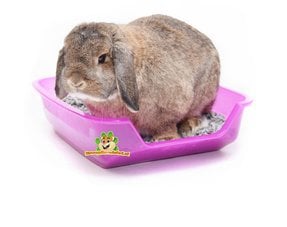 Rabbits are clean animals and are also litter-trained! They prefer to do their business in one designated spot in their enclosure, preferably in a corner. So, especially in the beginning, keep the corners of the enclosure clear. Once you've figured out which corner the rabbits have used for their toilet, place a rabbit litter box there. To help rabbits with toilet training, it's recommended, especially at first, to put any droppings they leave in other places in the litter box. This way, the animals quickly learn what to do. In a large rabbit hutch with a run, you can also leave out the bedding and opt to just use bedding in the litter box. This saves money and helps the animals even more with toilet training!
Rabbits are clean animals and are also litter-trained! They prefer to do their business in one designated spot in their enclosure, preferably in a corner. So, especially in the beginning, keep the corners of the enclosure clear. Once you've figured out which corner the rabbits have used for their toilet, place a rabbit litter box there. To help rabbits with toilet training, it's recommended, especially at first, to put any droppings they leave in other places in the litter box. This way, the animals quickly learn what to do. In a large rabbit hutch with a run, you can also leave out the bedding and opt to just use bedding in the litter box. This saves money and helps the animals even more with toilet training!
WARNING! Never use clumping cat litter! This can cause intestinal blockages if ingested.
4.2 Spatial requirements and layout
Rabbits need plenty of space to run, play, and explore. Furnishing their enclosure with gnawing materials, hiding places, and toys is vital for their well-being.
4.3 Indoor and Outdoor Accommodations
Most rabbit breeds can be kept both indoors and outdoors. Choosing the right type of enclosure depends on factors such as the weather, available space, and the specific rabbit breed.
4.4 Tips for a Safe Outdoor Run
An outdoor run offers rabbits the opportunity to enjoy fresh air. Safely designing an outdoor run is essential for keeping predators out and providing your rabbits with a safe play space.
Chapter 5: Rabbit Room Furnishings and Bedding
5.1 Choosing the Right Ground Covering
Choosing the right bedding for your rabbit's room is crucial. Non-slip properties are essential to prevent slipping, especially on smooth floors like laminate. Consider using bedding mats to create a comfortable and safe environment.
5.2 Enrichment and Toys
Rabbits are curious creatures that need mental and physical stimulation. Providing enrichment activities and suitable toys contributes to a happy rabbit life.
5.3 Night shelter and hiding places
A hutch offers rabbits a safe place to retreat. It should be cozy and easily accessible, especially for rabbits kept outdoors.
The rabbit house
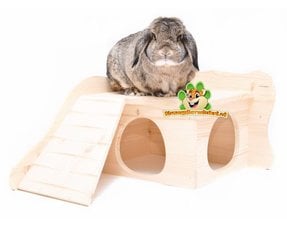 A rabbit hutch is essential for the enclosure. Rabbits enjoy having a place to retreat to. They like to do this by lying under or in something. A house gives them the peace and quiet they need for their afternoon nap. For outdoor rabbits, a night hutch is sufficient.
A rabbit hutch is essential for the enclosure. Rabbits enjoy having a place to retreat to. They like to do this by lying under or in something. A house gives them the peace and quiet they need for their afternoon nap. For outdoor rabbits, a night hutch is sufficient.
Chapter 6: Nail Care, Brushing, and Handling Rabbits
6.1 Nail care
Regular nail care is essential to prevent painful problems. Learn how to trim your rabbit's nails safely and without stress.
Rabbits' nails should be checked regularly, and if they're too long, they should be trimmed. Special rabbit nail clippers are available for this purpose. Be careful not to cut into the quick of the nail. This is the part of the nail where the blood vessels and nerves run. Cutting into this area is extremely painful! With light-colored rabbit nails, you can see the quick running through the nail; cut above the quick. With dark-colored nails, the quick is barely visible; you can use the fur line as a guide. If you're nervous about trimming your own nails, visit a rabbit groomer or your veterinarian. They can show you how so you might be able to do it yourself later!
6.2 Brushing and Coat Care
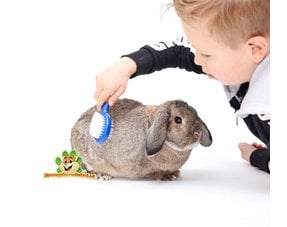 Brushing is important, especially during shedding season, to prevent tangles and keep the coat healthy. Find out which type of brush is best for your rabbit breed.
Brushing is important, especially during shedding season, to prevent tangles and keep the coat healthy. Find out which type of brush is best for your rabbit breed.
Some rabbits need a thorough brushing, especially during the shedding season! Short-haired rabbits should be brushed especially when they're shedding. Long-haired rabbits should always be brushed regularly because their fur is prone to matting. Preventing matting is much more pleasant for you and your rabbit than dealing with it! A comb and soft brush are ideal for brushing rabbits. During your daily cuddle session, you can use your hands to check the fur for mats. If you find one, handle it immediately to prevent it from getting worse. Don't forget the bottom and tail, as these are also prone to matting. Be careful around the tail.
It can sometimes be beneficial to trim long-haired rabbit breeds every two months. You can do this yourself with special rabbit scissors or have it done by a groomer. Be careful with the face and make sure you know how short you can cut the fur. Cutting the fur too short or incorrectly can cause coat problems.
6.3 Dealing with Rabbits
Rabbits are generally less fond of being picked up, but they do enjoy being petted. Learn how to interact with rabbits respectfully, taking their individual personalities into account.
This is how we lift rabbits
The rabbit's head should be facing you so it can see you. Then, place one hand around its bottom and slide the other under its chest. You can now lift the rabbit and hold it against you, preferably with its head tucked under your arm. This gives the rabbit a stable grip and makes it feel safe, nestled against your body.
A rabbit that struggles a lot or is unaccustomed to being picked up and reacts wildly is best handled as follows: To pick up the rabbit as safely as possible, grasp the skin between the shoulder blades. This should not be confused with the skin in the net, which shouldn't be done. With your other hand under the buttocks, you can pick up the rabbit and then place it against your body.
WARNING! Never pick up a rabbit by its ears. This is sometimes depicted in cartoons, but it's cruel and painful for the animals.
Petting? Please! Picking it up? No thanks!
It's good to know that most rabbits don't like being picked up. If you keep this in mind when handling them, they'll appreciate it! Truly anxious rabbits may bite or thrash their back legs when picked up. This can scratch and injure you, but worse, they can even break their backs if they thrash too hard! If you do pick up your rabbit, do so very gently, keeping your back legs firmly secured.
Chapter 7: Rabbit Nutrition
7.1 The Importance of a Good Diet
Rabbits are herbivores and need a diet high in fiber. Hay forms the foundation of their diet and should be available at all times. Find out how to provide a balanced diet that meets your rabbit's nutritional needs.
A rabbit is a herbivore, meaning it eats plants. Rabbits therefore need plant-based food with plenty of fiber. The best source of fiber is hay . Therefore, always give your rabbit enough hay. A good rule of thumb is to give a tuft of hay per day that's the same size as the rabbit. Both hay and straw contain fiber, but straw has almost no nutritional value, so hay is always preferred.
Grass and vegetables also contain a lot of fiber, but before the rabbit can eat them, it needs to get used to this diet. Build this up gradually. Rabbits shouldn't just be given any vegetable. Gas-producing greens are particularly bad for them. These include cabbage and leeks. Other vegetables such as endive, carrot tops, radish leaves, and chicory are fine. They can also have fruit, but not too often. Fruit contains sugars, which can cause the animals to become overweight. Furthermore, sugars aren't processed properly by the gastrointestinal tract.
Besides hay, rabbits also need hard food . We offer a choice of mixed feed and all-in-one pellets. The major advantage of all-in-one pellets like pellets is that rabbits can't selectively eat. Some rabbits are selective eaters, picking only the goodies from the food, which can lead to nutritional deficiencies, vitamin deficiencies, and overweight or underweight. Whichever rabbit food you choose, we prefer the highest fiber content. Hay should always be the staple food!
The amount of hard food to feed can vary by brand. This depends heavily on the food's composition. Therefore, always carefully check the back of the packaging for the manufacturer's feeding recommendations. You also need to make a good estimate, as an active outdoor rabbit needs more food than a calm indoor rabbit. Different life stages can also play a role. Consider, for example, young animals, pregnant and lactating rabbits, and of course, older rabbits. All these groups have different nutritional needs. Fortunately, there is special food available for all these life stages. You can also weigh the rabbits and keep track of their weight during the initial period.
Did you know that rabbits eat their night droppings? These are cecal pellets. We call this "coprophagy" (a fancy word). Rabbits do this to extract all their nutrients, especially vitamin B12, from their food. Rabbits eat these droppings directly from their anus. They are small, shiny pellets. If you find them frequently in their enclosure, chances are your rabbit is being overfed.
7.2 Suitable Fruits and Vegetables
In addition to hay, rabbits can enjoy a variety of fruits and vegetables.
7.3 Rabbit food and gnawing material
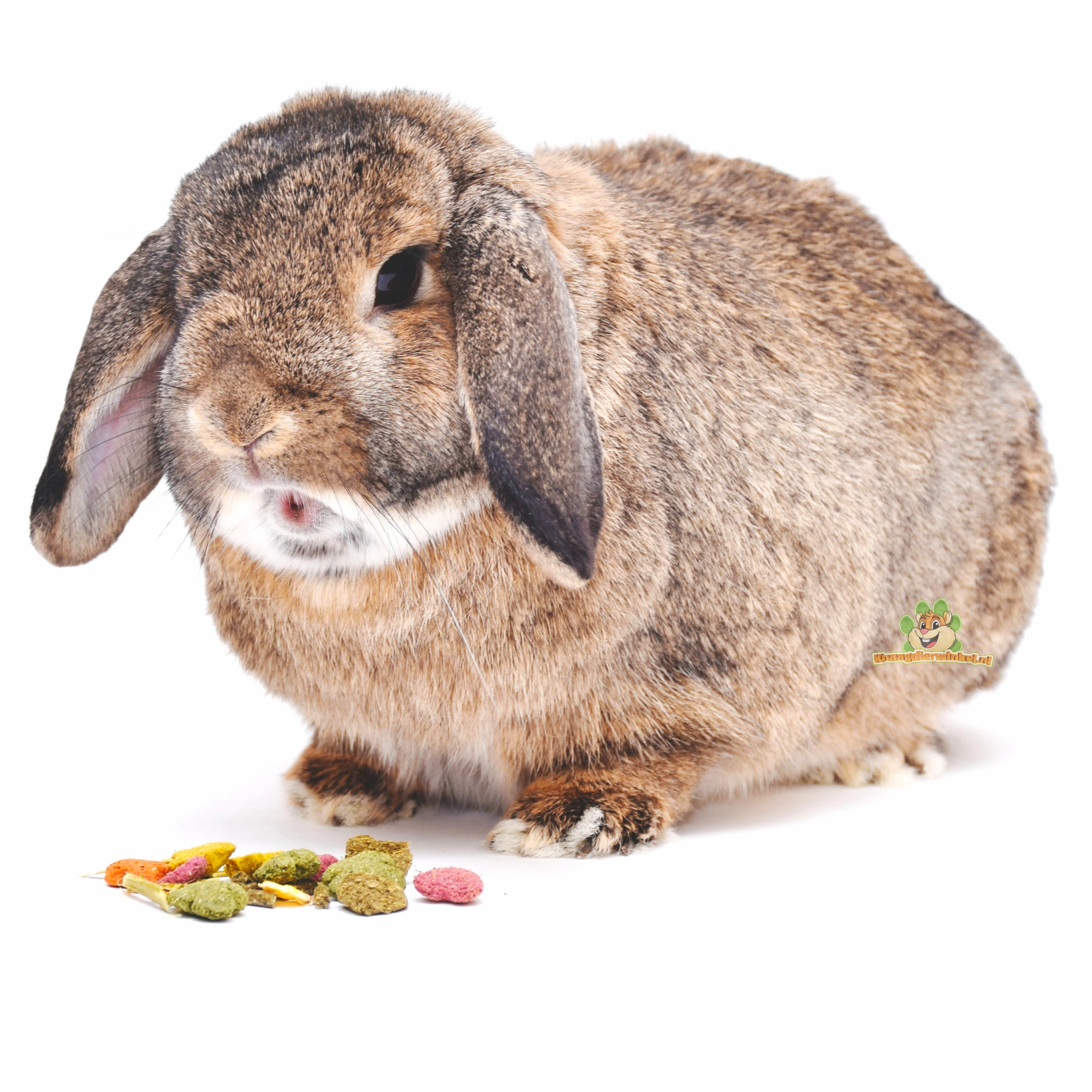 Rabbit food is an important part of a rabbit's diet. Provide a diet high in fiber and avoid overfeeding to prevent obesity. Also offer safe gnawing materials to satisfy their natural gnawing instincts.
Rabbit food is an important part of a rabbit's diet. Provide a diet high in fiber and avoid overfeeding to prevent obesity. Also offer safe gnawing materials to satisfy their natural gnawing instincts.
Gnawing material for rabbits - gnawing wood
Rabbits may not be rodents, but they love to gnaw! In fact, they absolutely need it. Rabbits' teeth grow continuously throughout their lives and need to wear down properly to prevent dental problems. Good rabbit gnawing materials include: willow branches, hazelnut branches, apple tree branches, lime tree, blackthorn, blackcurrant, Echinacea branches, and hemp branches.
The old-fashioned chalk gnawing stone is not recommended as a gnawing material. It can cause health problems. Therefore, you won't find this stone in our product range. Fortunately, healthy gnawing stones made from corn are now available for rabbits, and these are safe to give. However, the branches are preferable; besides gnawing, they're a fun pastime for the animals and they also get extra fiber.
For extensive information on rodent care, see LICG
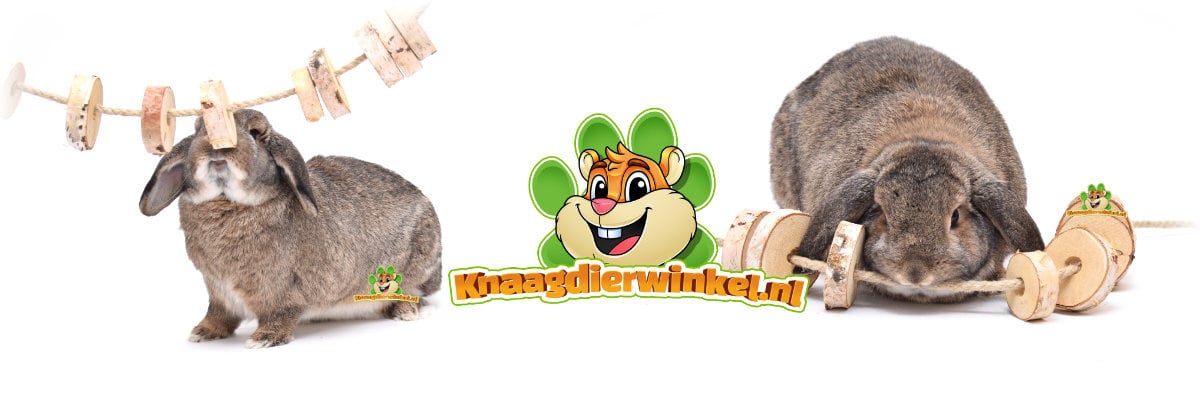
Chapter 8: Keeping Rabbits Healthy: Vaccinations and Disease Prevention
8.1 Myxomatosis and VHD (RHD)
Myxomatosis and Rabbit Hemorrhagic Disease (RHD) are serious diseases in rabbits. Vaccination is an effective way to prevent these diseases. Learn about the symptoms, preventative measures, and the importance of regular veterinary visits.
8.2 General Health Checks
Regular health checks are essential for early detection of any health problems. Learn what to look for and how to monitor your rabbit's overall health.
A healthy rabbit can be recognized by its active and alert demeanor, clean eyes, and clean, dry fur. A sick rabbit can be recognized by the following symptoms: lethargic and listless behavior, not eating, dirty eyes, dirty nose, dirty fur around the bottom, drooling, itching, bald patches, and tilting its head.
If you notice any such symptoms, always take your rabbit to the vet. If you notice this when you purchase the animal, do not buy it.
Furthermore, droppings are crucial for your rabbit's health. Small, hard droppings indicate constipation or insufficient food intake. Soft or even wet droppings can indicate intestinal problems. In most cases, the wrong diet or a rapid change in food is the culprit.
Is your rabbit not eating? Then you need to see a vet immediately! A rabbit can't go too long without food; even a day can be life-threatening or even fatal. Supplemental feeding is almost always necessary in such cases. A lack of appetite can be caused by various factors, including intestinal problems, dental problems, pain, stress, and so on. Dental problems, such as teeth growing incorrectly, are common. In such cases, a veterinarian should always be consulted.
Two particularly dangerous and contagious diseases also occur in rabbits: myxomatosis and VHD (RHD). These two diseases are almost always fatal for rabbits. VHD spreads very quickly and easily. Vaccination is strongly recommended by veterinarians. In the Netherlands, there are two viral variants of VHD. Myxomatosis and VHD type 1 are vaccinated annually. VHD type 2 requires vaccination either biannual or annual, depending on the vaccine.
8.3 Hygiene and Cleaning
A clean living environment is crucial for rabbit health. Discover the proper methods for cleaning the enclosure and maintaining hygiene.
How often you need to clean the hutch depends largely on how you've set it up and what kind of bedding you use. For example, if you don't have bedding, but only a toilet, you'll be done quickly and only need to clean the toilet every few days. Clean the water bottle regularly and watch out for algae growth. This can happen both indoors and outdoors. Special thermal covers are available that prevent algae growth in the water bottle. For outdoor rabbits, it's crucial to keep the hutch hygienic to prevent flies from entering. Use safe cleaning products and rinse cleaned areas thoroughly with water.
For urine stains, you can use CSI Urine Spray or Eco Pets Urine Buster . These products are safe and remove urine through a special blend of enzymes.
Chapter 9: Reproduction and Breeding
9.1 Sex Determination and Castration/Sterilization
Understanding sex characteristics is important to prevent unwanted breeding. Consider spaying or neutering to reduce health problems and prevent unwanted behavioral issues.
9.2 Pregnancy and Birth
If you choose to breed rabbits, it's crucial to know what to expect during pregnancy and birth. Provide a safe and comfortable environment for the mother rabbit and her young.
9.3 Care for Newborn Rabbits
Newborn rabbits require special care and attention. Learn about proper nutrition, temperature requirements, and other aspects of caring for young rabbits.
Chapter 10: Behavioral Problems and Solutions
10.1 Common Behavioral Problems
From chewing to digging, rabbits can exhibit a variety of behavioral problems. Identify the causes behind common behavioral problems and discover effective solutions.
10.2 Anxiety and Stress in Rabbits
Rabbits are sensitive creatures prone to anxiety and stress. Understand the causes of anxiety and stress and discover ways to provide a calming environment.
10.3 The Importance of Socialization
Socialization is crucial for rabbits, especially when they're young. Learn how to build a strong bond with your rabbits through positive interactions and attention.
Chapter 11: Traveling with Rabbits
11.1 Preparing for Travel
Whether you're making a short trip to the vet or planning a longer journey, it's essential to prepare properly for traveling with rabbits. Learn what precautions you should take to make the trip as stress-free as possible.
11.2 Safe Transport
Choosing the right mode of transportation and providing a safe travel environment are crucial. Find out which modes of transportation are suitable for rabbits and how to ensure their safety during travel.
11.3 Tips for on the Road
Traveling can be stressful for rabbits, but there are several ways to improve the experience. Learn how to make the travel environment more comfortable and minimize stress.
Chapter 12: Rabbit Education and Training
12.1 Rabbit Intelligence
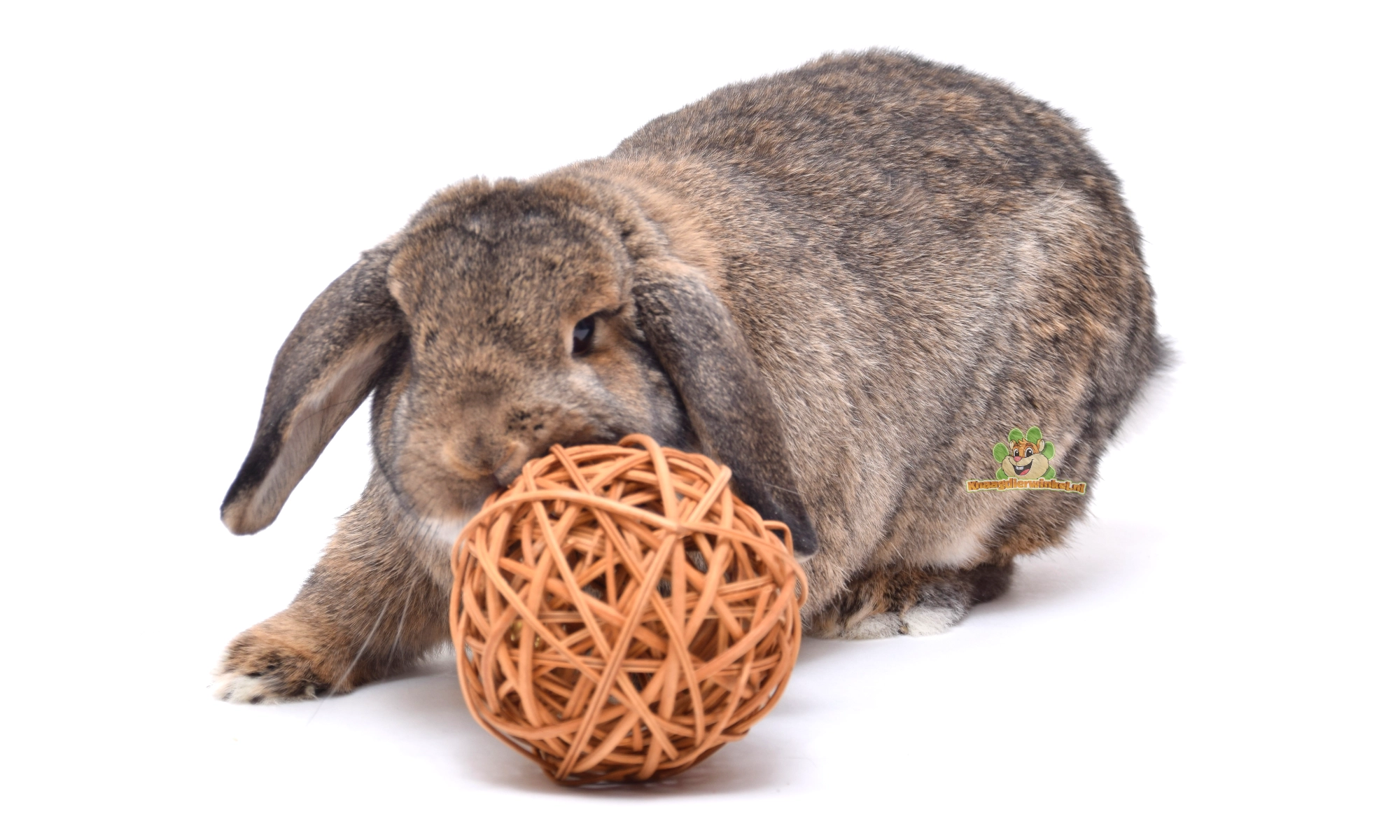 Rabbits are intelligent animals capable of learning various tricks and obeying simple commands. Discover how to boost rabbit intelligence and which types of training are suitable.
Rabbits are intelligent animals capable of learning various tricks and obeying simple commands. Discover how to boost rabbit intelligence and which types of training are suitable.
12.2 Toilet training
Litter training is an important aspect of living with rabbits. Learn effective methods for litter training rabbits and how to prevent unwanted behavior.
12.3 Enrichment activities
Providing enrichment activities is essential for promoting rabbits' mental health. Discover creative ways to stimulate your rabbits and prevent boredom.
Chapter 13: Rabbits and Other Pets
13.1 Introduction to Other Pets
If you have multiple pets, carefully introducing rabbits to other animals is essential. Learn how to make this introduction safe and positive.
Chapter 14: Saying Goodbye and Grieving
14.1 The Importance of Grief Processing
Losing a pet is an emotional experience. Understand the importance of grieving and discover ways to cope with grief after saying goodbye to a beloved rabbit.
14.2 Remembrance and Memorials
Remembrance and the creation of memorials are ways to keep the memory of a deceased rabbit alive. Learn about different ways to pay tribute to your deceased pet.
14.3 Considering a New Rabbit
When you're ready to welcome another rabbit into your life, there are important considerations to keep in mind. Learn how to prepare for welcoming a new rabbit and make the transition as smooth as possible.
Conclusion
In this comprehensive guide, we've covered every aspect of keeping rabbits, from their personalities and natural behaviors in the wild to practical tips for housing, nutrition, healthcare, and more. By using this knowledge, you can build a loving and healthy relationship with your rabbits. Remember, every rabbit is unique, so take the time to understand their individual needs and preferences. With the right care and attention, your rabbits will thrive and become a valuable part of your life.


